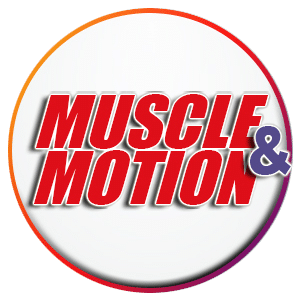Strengthen and protect your hamstrings with the Nordic Hamstring Curl!
In this Muscle and Motion article, we will delve into the anatomy of the Nordic Hamstring Curl, an exercise specifically designed to strengthen the hamstrings and reduce the risk of strain or injury. By understanding the anatomy of the Nordic Hamstring Curl, you will be able to use this strengthening exercise to train efficiently while also minimizing the risk of strain or injury.
The hamstrings, composed of three key muscles, play a vital role in powering our leg movements, making them essential for running, jumping, and climbing. However, due to their vulnerability to injury, particularly among athletes and sprinters, it is crucial to incorporate practical training exercises to protect and strengthen these muscles.
Join us as we explore the Nordic Hamstring Curl and its numerous benefits in promoting hamstring health and overall athletic performance.
The anatomy of the hamstrings
The hamstrings generally refer to the three muscles – the biceps femoris, the semimembranosus, and the semitendinosus at the back part of the thigh. To get an inside view of these muscles, log in to the Anatomy app and go to the Muscular Anatomy section.
What are the benefits of hamstring exercises?
The hamstrings are the muscles that enable us to move our legs powerfully and efficiently. They are essential muscles for running, jumping, climbing, and walking. Strengthening the hamstring muscles helps us to do these things better. The hamstring muscles are also vulnerable to injury and strain, particularly among athletes and sprinters. Strengthening the hamstrings with training exercises can reduce the risk of injury. Unfortunately, strain or injury to the hamstring can result in a very long and challenging recovery process, with an increased risk for secondary injury or permanent damage.
The Nordic Hamstring Curl, also called the Leg Curl or Russian Hamstring Curl, is a strength exercise that primarily works the hamstring muscles.
How to perform the Nordic Hamstring Curl
The Nordic Hamstring Curl involves kneeling on a pad (for knee comfort) and lowering your torso slowly and with control. At the same time, the ankles are held in place by a partner, a loaded barbell, or any other immovable object. The movement should be slow and controlled. You should come as forward or low to the floor as possible without using your hands/arms. Only put your hands out in front of you when you can no longer rely on your legs. Then push yourself back up to the starting position and repeat.
Be aware!
Be aware of possible delayed onset muscle soreness (DOMS) when including this exercise in your training session, and start slow! Start with just a few reps at the beginning, and don’t bring your body any lower than you can manage to easily before putting your arms out, and gradually build your way up to more repetitions and a greater range of movement.
What not to do
The Nordic Hamstring Curl is a highly effective hamstring exercise. It can help prevent hamstring injuries due to the eccentric emphasis, which shifts the hamstrings’ maximum force potential to larger muscle lengths. A common mistake when performing this exercise is bending at the hips. Bending at the hips will not do much to strengthen the hamstrings.
Assisted Nordic Hamstring Curls – exercise progression
If you are not ready to perform the full Nordic Hamstring Curl, you can use a resistance band to execute a variation of this exercise. This will allow you to build strength and progress to full movement.
Secure a resistance band to a stationary object positioned behind you, making sure to place the band higher than your head. Pull the other end of the band over your head and hold it at both ends, close to your shoulders. The band will enable you to descend slowly toward the ground.
Want to know more?
When you understand concepts better, you can explain and teach better!
To gain full access to advanced knowledge on over 1000 Strength Training Exercises, SIGN-UP for FREE to Muscle & Motion Strength Training app today!


